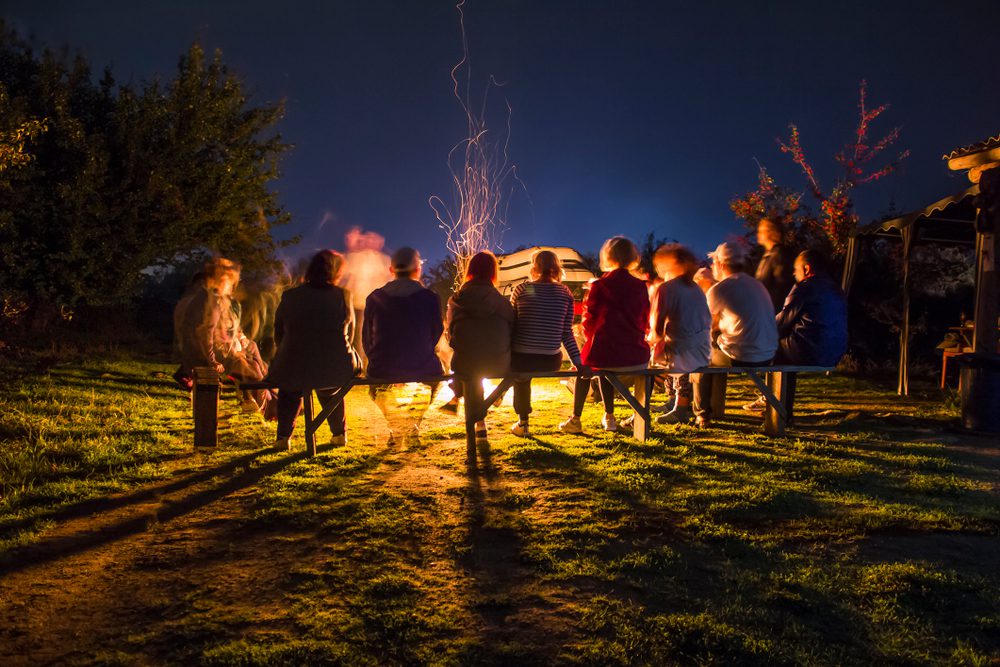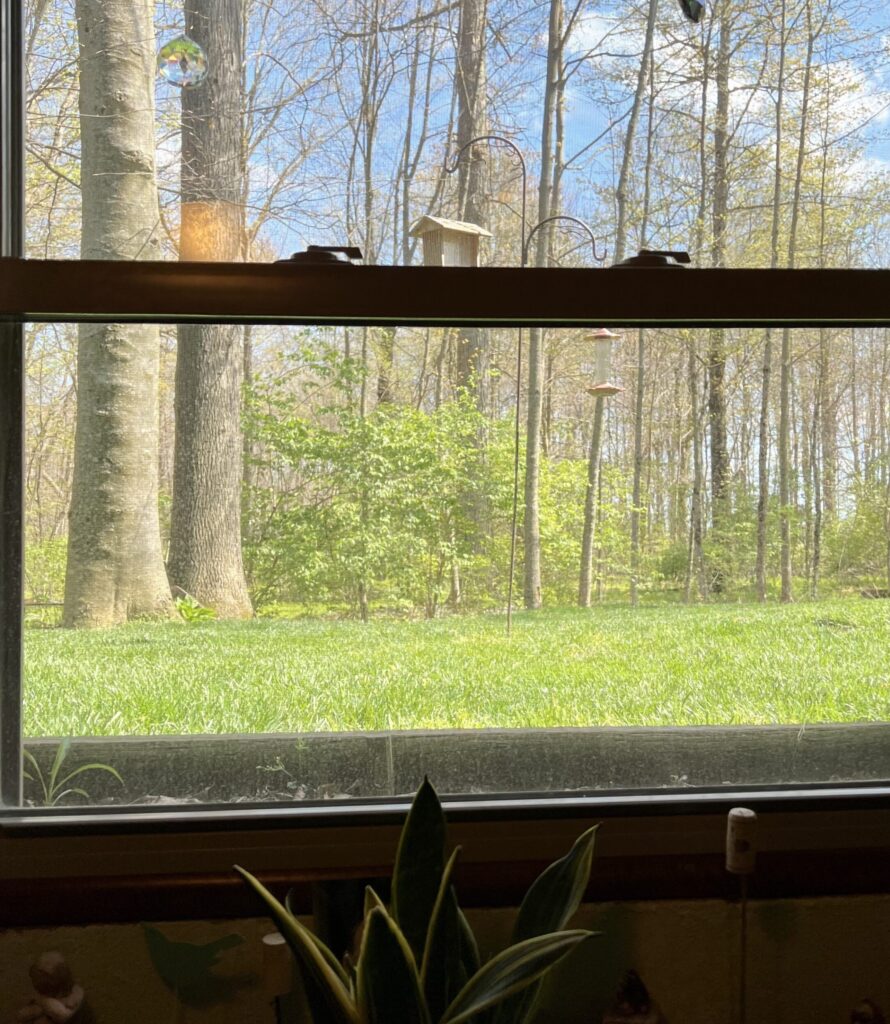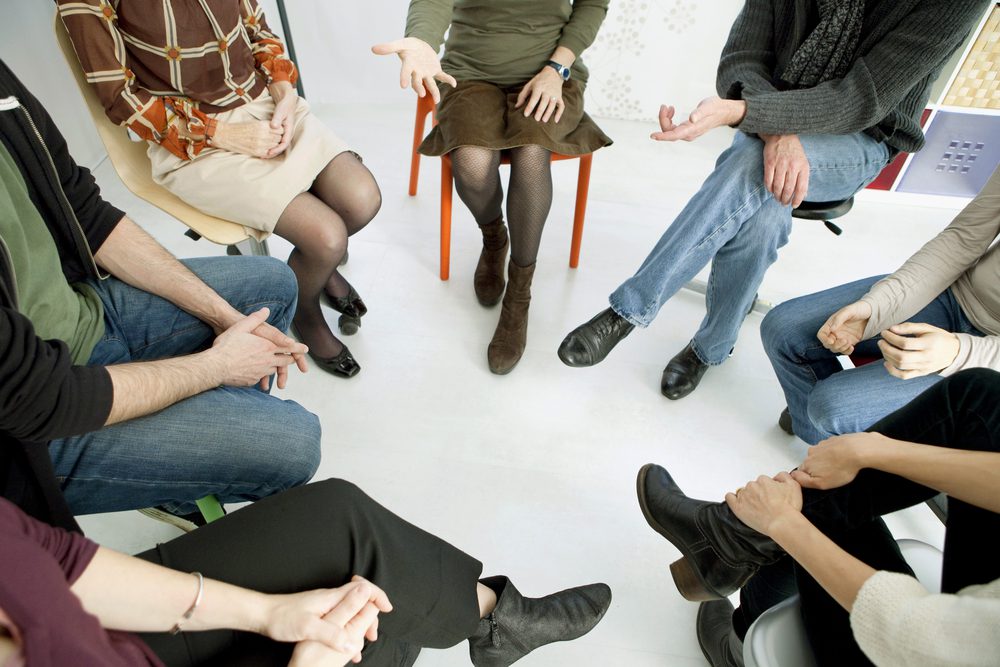My sons were teenagers when I was introduced to the art of dialogue. One night as we sat around a campfire with friends, a casual conversation began.

The silence of the night air around a central fire allowed us to listen to each other and we began the art of dialogue.
But it wasn’t just the setting, or the quiet of the surrounding night. What helped was the fact that my husband and I had been practicing group dialogue in our spiritual retreats, and we were learning how to listen.
The art of dialogue
This was the gift that allowed us to listen and hear these teenagers as they explored ideas about life.
What started as a random conversation, became a Sunday night tradition among our boys and their friends. The size of the group varied from ten to over thirty. Many times, other parents and adults joined the circle. The teenagers brought the topics, and we learned to listen to each other.
Closing the generation gap
I think often of those halcyon nights when I read of todays teenagers and parents, with the seeming disconnected world we live in now, in spite of all our internet connections.
Pondering how the gift of dialogue could possibly help to right the wrongs of our troubled youth. Wouldn’t it be nice to share the experience we are living in a way that allows for curiosity about another’s thoughts? To discover why listening and dialogue override defensiveness or persuasion?
The ancient Greeks referred to the use of conversation as a deep learning process dialogos. Dia meaning through and logos, the word or the meaning of the words. And, David Bohm, a quantum physicist, has described dialogue “as a pool of common meaning which cannot be accessed individually.”
In today’s world of conditional listening, we often only listen to what mirrors our thinking, discarding what we deem “fake.” And yet, we still yearn for connection on a more profound level.
What if, we could discover the tools of dialogue and start some real conversations?
Where is our stream of thought taking us?

It is a natural fact, that when we listen to others, something they might say will trigger a stream of thoughts in our mind and if we are not attentive, we start to follow that stream of thought and our mind stops listening. But, what if we could be aware of this, and divert the stream, while we continue to listen. Allowing the other person’s stream of thought to fill up the pool before we add our stream of thought. Imagine then, this stream flowing to a larger pool with all the individual thoughts streaming together, forming a collection of shared meaning.
This collective knowledge can then be beneficial to all, as is evident with the positive use of the Internet.
Shared knowledge emerges through the art of dialogue
I was looking to repair a window that had gotten off its hinges. Certain that I would have to call a “window expert” to fix it, but, on an off chance, I searched the internet for the brand and entered a question. I found a YouTube video posted by someone who had the same situation. This person solved my problem by sharing a solution they discovered. It showed; how to hold the window, how to lift the frame, and how to latch the mechanism. I followed the instructions, and it worked perfectly.
Thinking about this, I realized that the pool of knowledge shared in dialogue allowed some movement in my mind. Expanding my experience of an unhinged window did not invalidate my experience; it gave it a larger framework. I did not own the problem I encountered; it was a common issue that found a solution by sharing knowledge.
Different stories do not invalidate my story
Very often, we are so hooked on our story, that we are unable to listen to the advise we are given to be able to change our story.
Accepting the advice for fixing the window was easy, because it was not so personal. But what happens when I need solutions for other parts of my life? Am I willing to accept the opinions of others when my mind is set?
I recognize that I am not always willing to release my hold on an opinion. Sometimes I want it to remain mine. This opinion/thought is me. I create a dam that stops the natural flow of living and fixes me in a not sustainable view, and, frankly, when that happens, I feel horrible. Like most people, I want connection and sharing, but my behavior sometimes keeps that from me. We all experience this today in our relationships with each other. But we can, when we use the tools of dialogue, learn to express ourselves, while still validating the expression of others. One opinion does not have to invalidate the other opinion, it can actually expand the gift of knowledge.
Opening to another perspective
The window I repaired is at the root level of the woods that surround my property. Through it, I see a changing scene of light and shadow. This view is constantly changing, never fixed but giving me a “window” into the outside world as it is. In the winter, the sun blazes into my office. The hanging prisms refract light throughout my room. When Spring arrives, I see the green grass and young leaves beginning to form as newly returned hummingbirds find their feeder. As I type, I wonder, what is the view out your window? What is the dialogue you are having in your mind?

A beautiful series of photos shared on social media called “View from my Window” reveals the variety of perspectives from the same world. A window looks out on a courtyard in Italy, a mountain view in Tennessee, a river runs by a window in France, fields in the United States, mountains in Switzerland, and a brick wall outside a New York City apartment. Every view is unique and reveals different perspectives of the world we share.
The art of dialogue: Making the connection
In the 1990s, Cafh introduced the idea of dialogue as a spiritual exercise in meetings and retreats. Group dialogue implies an agreement among participants to experience their internal thought processes while participating with others in a group setting and listening with intention. Cafh’s support of discovering individuality within a group context gives a perfect place to practice.
This way of communicating was a struggle at first because as humans, we were used to having a conversation in the context of convincing, defending a thought, winning a discussion, or reaching a conclusion. During this learning period, we studied David Bohm, a quantum physicist who recorded dialogues with many people, including Krishnamurti, Einstein, and the Dalai Lama. Bohm emphasized the need for exploring communication and paying attention to what keeps us from really hearing each other. He saw dialogue as a means for us to transform society.
These fine ideals were out of reach for my mind at the time, as the main thing I struggled with within this group setting was pausing before speaking. During the deliberate pause between speakers, I found I did not listen, my ears heard what was said, but I was often in a hurry to respond. My thoughts overrode all else. I was often surprised when someone else said what I was going to say or when I felt my internal response when I disagreed. I began to experience the pause internally as thinking slowed, and I followed their trail.
Dialogue is a process
I soon learned that dialogue is “a tool for exploring thought that can be followed, questioned, and separated to the point of observation. A separation between the thinker and thought occurs that allows space.”
I discovered in the pause, that my thoughts were much like my window view. Practicing dialogue is key. When looking out through our windows, we have different views, but that same variety in perspective is more subtle interiorly. I see the limits and expanse of my opinion when my view is shared. Connecting with others on a deeper level allows curiosity about other viewpoints and an opportunity to expand my awareness.
Sparking a conversation

There is a science to dialogue, and in a scene from the movie Dances with Wolves, we can see it play out. The Native Americans are having a heated discussion on what to do with the “crazy” white man living nearby. The speaker held a talking stick, and those without the stick listened. The tribe was respectfully silent. They heard and acknowledged each view. They did not all agree or change their position, but they listened and valued each other. The conversation showed respect for each opinion and the group dynamic in considering the proper action.
When we were having our “dialogues” on our Sunday nights with my sons, they wanted to use the talking stick. They understood, the importance of respect, for the one who is speaking, as well as the thoughtfulness, needed before the moment one speaks.
We placed a rain stick by the fire, and when someone wanted to speak, they walked to the stick, brought it back to where they were sitting, and said all that they wanted to say. No one else spoke until you replaced the stick by the fire; in between for voice speaking, there was silence.
The ceremonial act of getting the stick and returning it slowed the conversation. We would sit in the shadows, somewhat anonymously, as our faces were not clear. We could only hear the speaker and draw deeply into the silence. The act of speaking and being listened to slowed the conversation. A natural silence grew between speakers. This simple act of respecting the stick set the tone of an “uncommon conversation” among companions.
The need to be heard
The need to be heard was evident. The teenagers spoke freely and trusted the group to listen to them with an open mind. The adults were also respected when speaking, and together the roles fell away as we became companions of one another.
One participant said that he had never felt heard before.
That particular night, we were talking about balance. I remember it well. One speaker said that to walk forward is always to be off-balance.
“When you are walking,” he said. “You are propelling yourself into falling. You quickly place your other foot down to keep from falling. That is the act of walking, of moving forward.”
Later, he shared that he did not feel the need to push into the conversation because others listened to him.
Another spoke of the silence of sitting together and just being there. He said he learned more from the silence than from the words. It was a time of learning for all. We found common ground. Our words bridged our silent thoughts.

Sitting together in silence
In an exasperating time of parental/teenage conflict, we found a way to bridge the gap between generations. We discovered we did not look at the world the same way, but our willingness to suspend our roles as parent and child allowed a time of connection. Now, we often speak of that time together wistfully, for it was a safe space for us to coexist as companions on a journey of exploration.
Dialogue as an art requires collaboration
We were lucky, at that time, but how do we bridge the gap in today’s world?
Building on this experience of shared meaning, I began to consider what was needed to create a space for dialogue in todays world.
David Bohm identifies three primary conditions that must be present:
- All participants “suspend” their assumptions.
- All participants regard one another as equals.
- A “facilitator.”
“Suspension helps participants cultivate a firsthand experience of the nature of thought, the limits of rationality, and the creative possibilities of a consciousness-informed process of inquiry… You have a thought rather than be the thought, you have a feeling rather than be the feeling”.
Assumptions keep us from really hearing each other. Search engines and texts fill in the word from the first few letters typed. However, this assumption is not just in the typeface; it is alive and well in how we listen and in how our thought patterns function.
Suspending assumptions means, quite simply, I am open to whether or not I hear you. I tend to assume I understand what you are saying, but do I really know?
Am I simply filling in with my own experience instead of listening to yours?
Setting aside my assumptions means I must follow my thoughts and habit of thinking. I reflect on where that thought originated and can allow the possibility of what the speaker is saying to enlarge my view.
To suspend assumptions is not to deny them, but to reveal them and bring them forward.
Acknowledged and shared, they contrast with the other assumptions shared by the group. This group context helps break the mind’s desire to jump to conclusions and hold onto thoughts as dogmatic absolutes.
Letting go of assumptions
To suspend convincing others of your point of view does not mean that you give up your point of view. Rather it means that you place your view in the context of the whole.
It is interesting to have a conversation with people who share the same experience.
In the same vein, I remember conversations with my brothers when we tried to convince each other that our view was the truth of what happened. It was clear that we experienced the same event in different ways. Our memory and emotions changed the context, it was not the same situation.
Above all, when we set aside the need to convince others that we are right and they are wrong, we enter the possibility of more accurately describing and touching the event. We see our reactions, impulses, feeling, and opinions. Recognizing them in ourselves, we pay attention to the group.
We are equals
In dialogue, each voice is validated. It is given what it needs to flourish and become a more significant part of a whole. Seeing each other as equals creates a positive and supportive tone. While this sounds simple, it is a critical part of the dialogue process. If the adults in our campfire dialogues had seen themselves as the authority among the teenagers, there would have been no open sharing.
Likewise, if the teenagers had perceived the adults as “being out of it.” We would not have been able to continue a valid conversation.
When we see each other as colleagues, our thoughts are equal. Accepting the validity of one’s shared experience without judgment of position or authority allows for complete sharing. This simple shift provides a broader worldview.
The role of the facilitator
The facilitator’s role is vital in setting the tone and stage of dialogue. Directing participants to remember that dialogue is an individual internal process within a group context. It is the role of the facilitator to clarify and remind the group of the basic guidelines:
- Suspending assumptions.
- Valuing each other as equals.
- Pausing between speakers.
- Allowing the group to guide the flow of conversation.

The group’s support comes from the genuine desire to connect with others
We have a real need as humans to make a deep connection.
The experience of dialogue as a practice allows us to carry the process into our everyday lives. Above all, we listen better to what another is sharing. Moreover, we let the other finish a thought and pause before speaking. This need for deeper connection begins with family, friends, and people we meet daily. Finding value in every person changes the world and changes us.
Jorge Waxemberg, friend, author, and former spiritual director of Cafh said of dialogue,
“… it is the best way to expand our consciousness… It helps us not to be dogmatic and to understand that only by incorporating our vision with those of others, even those who think and feel the opposite way to us, can we have a more approximate vision of how things are.”
About the Author(s)
Libbie is a graduate of Ohio State University where her degree has proven a flexible base for writing, teaching, and exploring life. She facilitates the weekly Sunday eDialogue.





